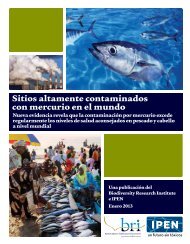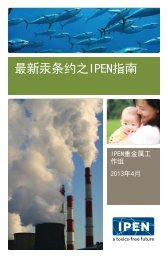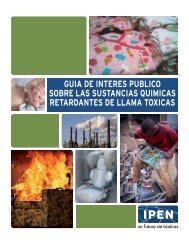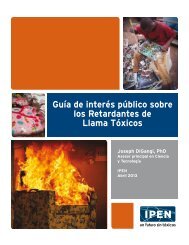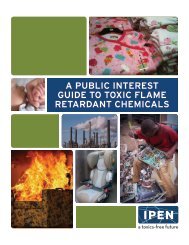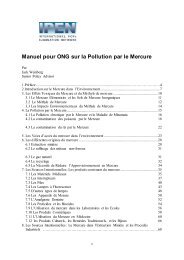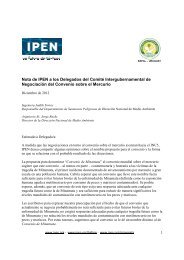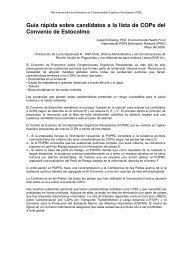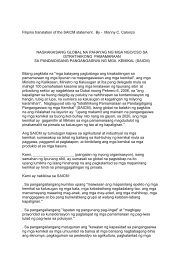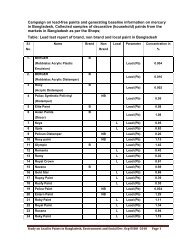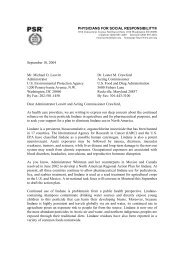The UNDP-GEF POPs Resource Kit - International POPs Elimination ...
The UNDP-GEF POPs Resource Kit - International POPs Elimination ...
The UNDP-GEF POPs Resource Kit - International POPs Elimination ...
You also want an ePaper? Increase the reach of your titles
YUMPU automatically turns print PDFs into web optimized ePapers that Google loves.
UNEP/POPS/CONF/2<br />
(c) <strong>The</strong> promotion of the recovery and recycling of waste and of substances generated and used in a<br />
process;<br />
(d) Replacement of feed materials which are persistent organic pollutants or where there is a direct<br />
link between the materials and releases of persistent organic pollutants from the source;<br />
(e) Good housekeeping and preventive maintenance programmes;<br />
(f) Improvements in waste management with the aim of the cessation of open and other uncontrolled<br />
burning of wastes, including the burning of landfill sites. When considering proposals to construct new waste<br />
disposal facilities, consideration should be given to alternatives such as activities to minimize the generation of<br />
municipal and medical waste, including resource recovery, reuse, recycling, waste separation and promoting<br />
products that generate less waste. Under this approach, public health concerns should be carefully considered;<br />
(g) Minimization of these chemicals as contaminants in products;<br />
(h) Avoiding elemental chlorine or chemicals generating elemental chlorine for bleaching.<br />
B. Best available techniques<br />
<strong>The</strong> concept of best available techniques is not aimed at the prescription of any specific technique or<br />
technology, but at taking into account the technical characteristics of the installation concerned, its geographical<br />
location and the local environmental conditions. Appropriate control techniques to reduce releases of the<br />
chemicals listed in Part I are in general the same. In determining best available techniques, special<br />
consideration should be given, generally or in specific cases, to the following factors, bearing in mind the likely<br />
costs and benefits of a measure and consideration of precaution and prevention:<br />
(a) General considerations:<br />
(i) <strong>The</strong> nature, effects and mass of the releases concerned: techniques may vary depending<br />
on source size;<br />
(ii) <strong>The</strong> commissioning dates for new or existing installations;<br />
(iii) <strong>The</strong> time needed to introduce the best available technique;<br />
(iv) <strong>The</strong> consumption and nature of raw materials used in the process and its energy efficiency;<br />
(v) <strong>The</strong> need to prevent or reduce to a minimum the overall impact of the releases to the<br />
environment and the risks to it;<br />
(vi) <strong>The</strong> need to prevent accidents and to minimize their consequences for the environment;<br />
(vii) <strong>The</strong> need to ensure occupational health and safety at workplaces;<br />
(viii) Comparable processes, facilities or methods of operation which have been tried with<br />
success on an industrial scale;<br />
(ix) Technological advances and changes in scientific knowledge and understanding.<br />
84 ----------------------------------------------------------------------------------------<strong>UNDP</strong>-<strong>GEF</strong> <strong>POPs</strong> <strong>Resource</strong> <strong>Kit</strong>



